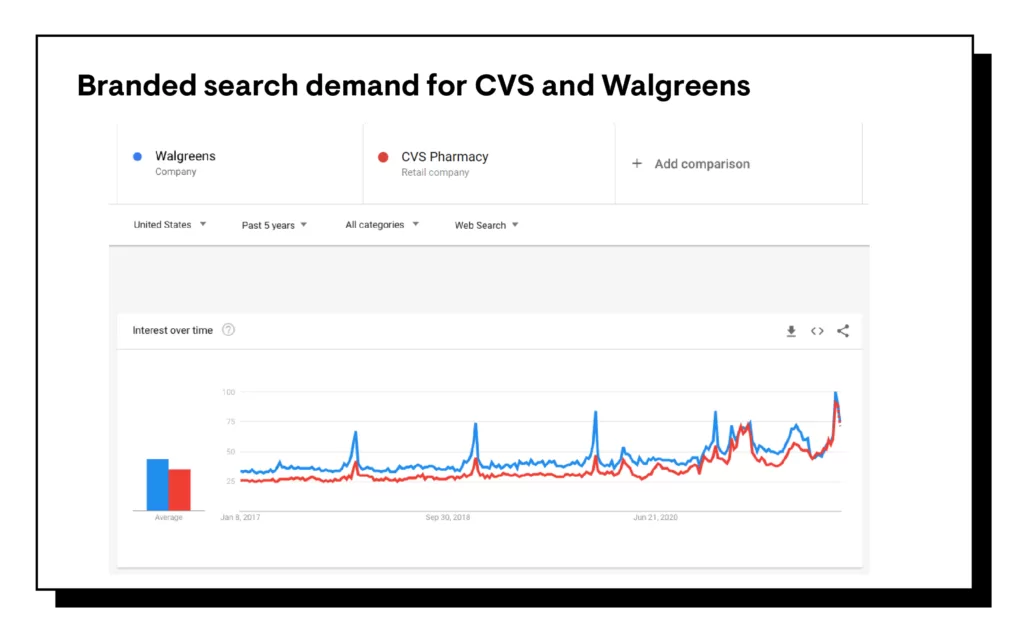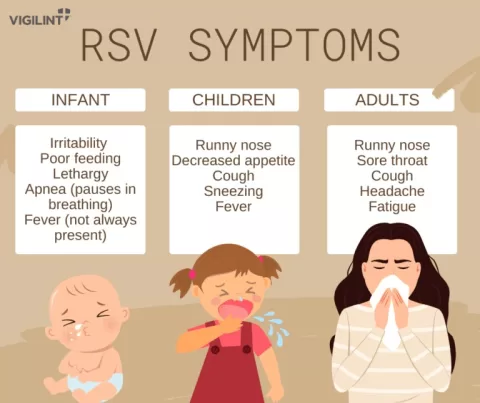COVID-19 search trends reveal a fascinating intersection between online behavior and public health insights, particularly regarding pulmonary symptoms like fever, cough, and dyspnea. As the pandemic unfolded, researchers analyzed daily search interest data from various countries using Google Trends analysis to better understand how public inquiry correlates with COVID-19 case reports. This dynamic conditional correlation (DCC) methodology not only shed light on the pressing need for effective COVID-19 monitoring but also illustrated the predictive modeling capabilities related to symptom searches. With significant correlations observed between online searches and reported cases, these trends underscore the value of utilizing digital data as a proactive measure in epidemic response strategies. By exploring the relationship between search behavior and health outcomes, we can better anticipate and manage future outbreaks.
The exploration of internet search behaviors related to COVID-19 has brought forth critical insights into health trends and public awareness. Tracking online inquiries for common pulmonary symptoms provides a window into the pandemic’s impact on societies, revealing how anticipated health crises influence digital engagement. These patterns are particularly crucial for COVID-19 tracking, allowing experts to adapt predictive models and understand the dynamics of symptom recognition among the public. Using advanced statistical tools, researchers have illustrated the importance of assessing search patterns to gauge the community’s health concerns and forecast fluctuations in COVID-19 infections. Thus, the analysis of web-based symptom searches emerges as a vital strategy for improving public health responses globally.
Understanding COVID-19 Monitoring Through Google Trends
In the realm of public health, monitoring the interest in symptoms related to COVID-19 has gained significant traction, thanks to the insights offered by Google Trends. This platform provides a unique lens through which health authorities can gauge public concern regarding pulmonary symptoms, such as cough and dyspnea. By analyzing search patterns, researchers can identify not only when interest peaked but also correlate these peaks with actual COVID-19 case surges. This relationship is particularly important for proactive health responses, as delays in symptom search trends can indicate broader issues within public health awareness and testing strategies.
The dynamic monitoring of COVID-19 cases using data from Google Trends is a powerful predictive tool. For instance, when there’s a noticeable uptick in queries about coughing or difficulty breathing, it may serve as an early warning signal for health officials, helping to prepare medical facilities for a potential increase in patients. Consequently, this study underscores the importance of leveraging online data analytics for enhancing public health strategies, ensuring timely interventions during pandemic peaks.
Pulmonary Symptoms as Indicators of COVID-19 Surges
Pulmonary symptoms have emerged as critical indicators of COVID-19, highlighting the need for constant monitoring. Studies, including the one published in ‘Scientific Reports,’ suggest that daily analyses of search interest in symptoms like fever and dry cough can provide valuable insights into the impending wave of infections. For example, the correlation between a rise in search interest and confirmed COVID-19 cases showcases the predictive power of digital platforms in understanding disease patterns, allowing for more informed decisions about resource allocation and public health messaging.
Furthermore, the relationship between pulmonary symptoms and COVID-19 cases varies based on factors such as geographical location and reporting practices. Research indicates that some regions may exhibit more robust correlations, which could be attributable to public awareness levels and healthcare accessibility. By utilizing dynamic conditional correlation models, researchers can adjust for these variances and obtain a more accurate picture of the relationship between search trends and actual case numbers, enhancing the efficacy of health monitoring systems.
Impact of Dynamic Conditional Correlation Analysis in COVID-19 Studies
Dynamic Conditional Correlation (DCC) analysis has transformed the landscape of COVID-19 studies, allowing researchers to uncover complex relationships between search behavior and pandemic developments. By applying DCC models, researchers can equip themselves with time-varying correlations, which are essential for understanding how fluctuations in public interest in pulmonary symptoms align with COVID-19 case reporting. Such analyses help distinguish between static and dynamic relationships, facilitating a more nuanced comprehension of public health trends over time.
In comparison to conventional correlation methods, DCC analysis provides a significant benefit by adapting to changing dynamics in data. For instance, as the pandemic evolves, so does the public’s search behavior. By capturing these shifts, health authorities can better anticipate surges in cases and modify their response strategies accordingly. This adaptability is crucial, especially in an ever-changing pandemic landscape where timely interventions can make a substantial difference in controlling transmission rates.
Analyzing Google Trends Data for Predictive Modeling in COVID-19
The integration of Google Trends data into predictive modeling for COVID-19 case forecasting illustrates the innovative methods researchers are employing today. This data provides insights into public interest in symptoms and can be harnessed to create models that predict potential spikes in COVID-19 cases based on symptom searches. Through the use of statistical techniques like those employed in the ‘Scientific Reports’ study, health analysts are equipped to forecast trends that might otherwise go unnoticed, bridging gaps in real-time epidemiological data.
Moreover, the ability to quantify the correlation between symptom queries and COVID-19 notifications enables researchers to refine their models continually. By incorporating lag times and various regional factors into their predictive modeling frameworks, they can enhance the accuracy and responsiveness of public health initiatives. This method stands as a testament to the evolving nature of public health responses, illustrating how real-time data can serve as a guide for effectively managing health crises.
The Role of Pulmonary Symptom Searches During COVID-19
The search for pulmonary symptoms has played an instrumental role in understanding the COVID-19 pandemic’s trajectory. As individuals became increasingly aware of the virus’s symptoms, their search behavior shifted, providing critical data points that correlate with confirmed cases. Patterns in Google searches often reflect public sentiment and anxiety relating to emerging health risks, which can guide health communication strategies. Thus, analyzing these trends offers both a diagnostic tool and a means of gauging public concern.
Furthermore, understanding the motives behind increased search interest in pulmonary symptoms can inform health campaigns aimed at educating the public. By recognizing specific symptoms that heighten search interest, health authorities can develop targeted education efforts, enhancing overall public health literacy. This engagement is vital for encouraging appropriate medical outreach and ensuring communities are informed and capable of responding effectively to health crises.
Variances in COVID-19 Search Trends Across Regions
Different regions exhibit varying patterns in COVID-19 search trends, influenced by cultural, social, and healthcare factors. For example, countries like Italy and Spain experienced unique spikes in pulmonary symptom searches at distinct points during the pandemic, reflecting their specific outbreak contexts and health infrastructures. This variability underscores the importance of localized data analysis when developing public health strategies, ensuring they are tailored to the unique needs of each population.
Moreover, this regional analysis helps identify discrepancies in public awareness and testing rates across countries. For instance, in parts of France and the UK, a delayed increase in symptom searches may correlate with lower testing availability or public knowledge about COVID-19. Such insights can direct resources more effectively, providing support where it is most needed and guiding international health organizations in adapting their approach to local conditions during a pandemic.
Leveraging Google Trends for Enhancing Public Health Strategies
Google Trends has emerged as a vital resource not just for understanding symptom searches but also for enhancing overall public health strategies in response to COVID-19. By continuously tracking the interest in key pulmonary symptoms, health officials can gain real-time insights into potential outbreaks and prepare accordingly. The direct correlation between symptom searches and case surges allows for improved allocation of resources and helps prioritize vaccination campaigns and testing efforts in regions with rising interest.
Additionally, this tool empowers health educators to craft more impactful messaging. By analyzing the specific symptoms that drive search behavior, health officials can develop targeted communications that address public fears and misinformation. Ultimately, leveraging Google Trends assists in informing communities while enabling health systems to be proactive rather than reactive, fundamentally enhancing the overall effectiveness of public health responses to crises.
The Significance of Predictive Modeling COVID-19 with Search Data
Predictive modeling using search data plays a crucial role in managing the COVID-19 outbreak. By utilizing web-based symptom search patterns as data inputs, researchers can develop sophisticated models that anticipate disease spread before it manifests in official case reports. This predictive ability is particularly valuable for anticipating healthcare needs and allocating resources where they are most needed, thereby potentially saving lives. The study highlights the importance of real-time data accessibility in developing timely and effective public health responses.
Moreover, employing predictive modeling techniques that incorporate both search interest and case data offers a multi-dimensional perspective on the pandemic’s trajectory. For health officials, this creates a framework for not only understanding current situations but also projecting future trends based on the observed relationships in data. As the pandemic evolves, these models can adapt to new information and changing public interest patterns, ensuring they remain relevant and useful for ongoing public health surveillance.
Public Awareness and its Influence on COVID-19 Symptom Searches
Public awareness significantly influences the volume and nature of COVID-19 symptom searches, creating varying patterns depending on community knowledge and outreach efforts. During the early stages of the pandemic, many searched for basic symptoms, leading to increased awareness and proactive health-seeking behaviors. This shift not only reflects an awareness of COVID-19 but also highlights the importance of public health messaging in shaping community responses to emerging health threats.
As the pandemic progressed, fluctuations in search interest have indicated changes in public understanding and anxiety levels concerning pulmonary symptoms. Studies have shown that increased media coverage or educational campaigns can lead to spikes in symptom-related searches, suggesting that the public is actively engaged and seeking information when prompted. Monitoring these shifts can empower health organizations to react in real-time, tailoring their educational efforts to bolster public knowledge and, ultimately, health outcomes.
Frequently Asked Questions
How do COVID-19 search trends for pulmonary symptoms reflect actual case reports?
COVID-19 search trends for pulmonary symptoms such as cough and dyspnea often correlate with actual case reports, as demonstrated in studies using dynamic conditional correlation (DCC) analysis. This method effectively tracks shifts in public interest, illustrating significant relationships over time between symptom searches and confirmed COVID-19 cases.
What is the significance of Google Trends analysis in monitoring COVID-19?
Google Trends analysis serves as a crucial tool in monitoring COVID-19 by evaluating public search interest in specific symptoms. This data can help health authorities predict case surges and enhance responses to outbreaks, making it an integral aspect of COVID-19 monitoring strategies.
How can predictive modeling help in understanding COVID-19 trends?
Predictive modeling COVID-19 utilizes search data and statistical analysis to anticipate future case numbers and symptom prevalence. By employing methodologies like dynamic conditional correlation, researchers can create models that adjust to real-time data, improving the accuracy of predictions regarding disease spread.
What role does dynamic conditional correlation play in analyzing COVID-19 search trends?
Dynamic conditional correlation (DCC) plays a pivotal role in analyzing COVID-19 search trends by allowing researchers to observe changing relationships between symptom searches and COVID-19 incidences over time. This method offers a more nuanced understanding than traditional static models, assisting in effective public health responses.
How have different countries experienced variations in COVID-19 search trends for pulmonary symptoms?
Findings indicate that variations in COVID-19 search trends for pulmonary symptoms exist among countries due to differences in public awareness, testing practices, and health communication. The DCC model reveals these time-varying correlations, highlighting the need for tailored approaches in monitoring across different regions.
What impact do changes in public awareness have on COVID-19 search trends?
Changes in public awareness can significantly impact COVID-19 search trends, as fluctuations in symptom-related queries may indicate shifts in concern or understanding of the virus. Research using Google Trends analysis shows that heightened awareness often corresponds with rising COVID-19 case reports, emphasizing the importance of effective communication.
Can Google Trends data be relied upon for real-time COVID-19 monitoring?
Yes, Google Trends data can provide valuable insights for real-time COVID-19 monitoring. By analyzing search volumes for pulmonary symptoms, researchers can gauge public health trends and potential outbreaks, reinforcing the effectiveness of search trend analysis in epidemic preparedness.
| Key Point | Details |
|---|---|
| Study Aim | To evaluate the relationship between web-based symptom searches and COVID-19 case reports. |
| Search Data Source | Daily search interest data from Google Trends for Turkey, Italy, Spain, France, and the UK (Jan 1, 2020 – Aug 31, 2020). |
| Methodology | Used dynamic conditional correlation analysis and sliding window correlation models to analyze search interest correlations with COVID-19 cases. |
| Key Findings | High correlations between symptom searches and COVID-19 cases; varying correlations across countries and symptoms were observed. |
| Public Health Implications | Google Trends can serve as a proactive tool for monitoring public health and predicting COVID-19 case surges based on search interest. |
Summary
COVID-19 search trends reveal significant correlations between pulmonary symptom searches and reported COVID-19 cases. This study effectively demonstrates how Google Trends data can be utilized to monitor public health responses, particularly during the evolving phases of the pandemic. The analysis across various countries highlights the utility of tracking symptom-related searches to foresee potential surges in COVID-19 cases, showcasing the importance of real-time data in public health decision-making.
The content provided on this blog (e.g., symptom descriptions, health tips, or general advice) is for informational purposes only and is not a substitute for professional medical advice, diagnosis, or treatment. Always seek the guidance of your physician or other qualified healthcare provider with any questions you may have regarding a medical condition. Never disregard professional medical advice or delay seeking it because of something you have read on this website. If you believe you may have a medical emergency, call your doctor or emergency services immediately. Reliance on any information provided by this blog is solely at your own risk.







